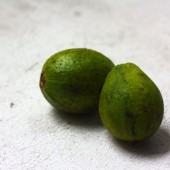Vegetarians, avert your eyes…
We’re getting into the nitty gritty of pork belly today.
The pork belly ramen at David Chang’s Momofuku restaurant was one of my first experiences. Rodney and I went several years ago, waited for hours for a table, and sat down to ramen that can only be described as “well worth the wait.” A sweet harmony between chewy noodles, the porkiest pork broth, the belly itself, and what I now know to be a perfectly-runny 5:10 minute soft-boiled egg.
I soon decided to tackle pork belly at home, buying it in smaller pieces before graduating to larger roasts, which is what I prefer to cook these days. It makes enough for dinner and leaves plenty of meat for leftovers.
Although it shouldn’t have been a surprise – pork belly is essentially a big slab of bacon – I thought that it was funny when my kids started to request it for dinner. Spaghetti with tomato sauce, chicken tenders….pork belly.
If I were to rank the nutritional value of pork belly, it would rank right up there next to candy canes. So we don’t eat it often, making it an infrequent luxury.
But considering that it is the holidays, and that we’ll be eating like gluttons all week long, what’s the harm in an additional 1,000-calorie meal, correct?
I’ve been in a Thanksgiving frame of mind and can’t stop using all manner of sage and cranberry; forgive me if you’re facing an overload of these ingredients. December will be about fruit cake and royal icing, and at a certain point you’re welcome to tell me to stop featuring those too.
Belly is nothing to look at in its raw state. You can buy it with the skin on – which is how it’s typically sold. You can alternatively ask your butcher to remove the skin, or do it yourself at home.
I’ve roasted pork belly with the skin on before, and it comes out flavorful, but with the texture of shoe leather. David Chang suggests that you keep the skin and make Chicharrón, but it involves a dehydrator and some technical skill in removing every last trace of fat. Count me in for that exercise when I retire to Palm Springs with my silver hair and Mephistos. Until then, there are far too many kids in the kitchen, husband included.
For now, let’s talk about the rest of the belly. In the spirit of Thanksgiving, this one is rubbed with a mixture of salt, sugar, chopped fresh sage and orange zest. I love citrus at this time of year, but Satsumas, with their vibrant color and sweet juice is perfect for this. But pick a favorite orange, anything will work.
Don’t forget to drink a beer while you’re making it.


Roast on high heat for an hour, then turn down the temp to low. Much of the fat will render out, leaving you with soft, shreddable meat and a crunchy exterior.
While the belly is roasting, switch gears and make your cranberry sauce.













